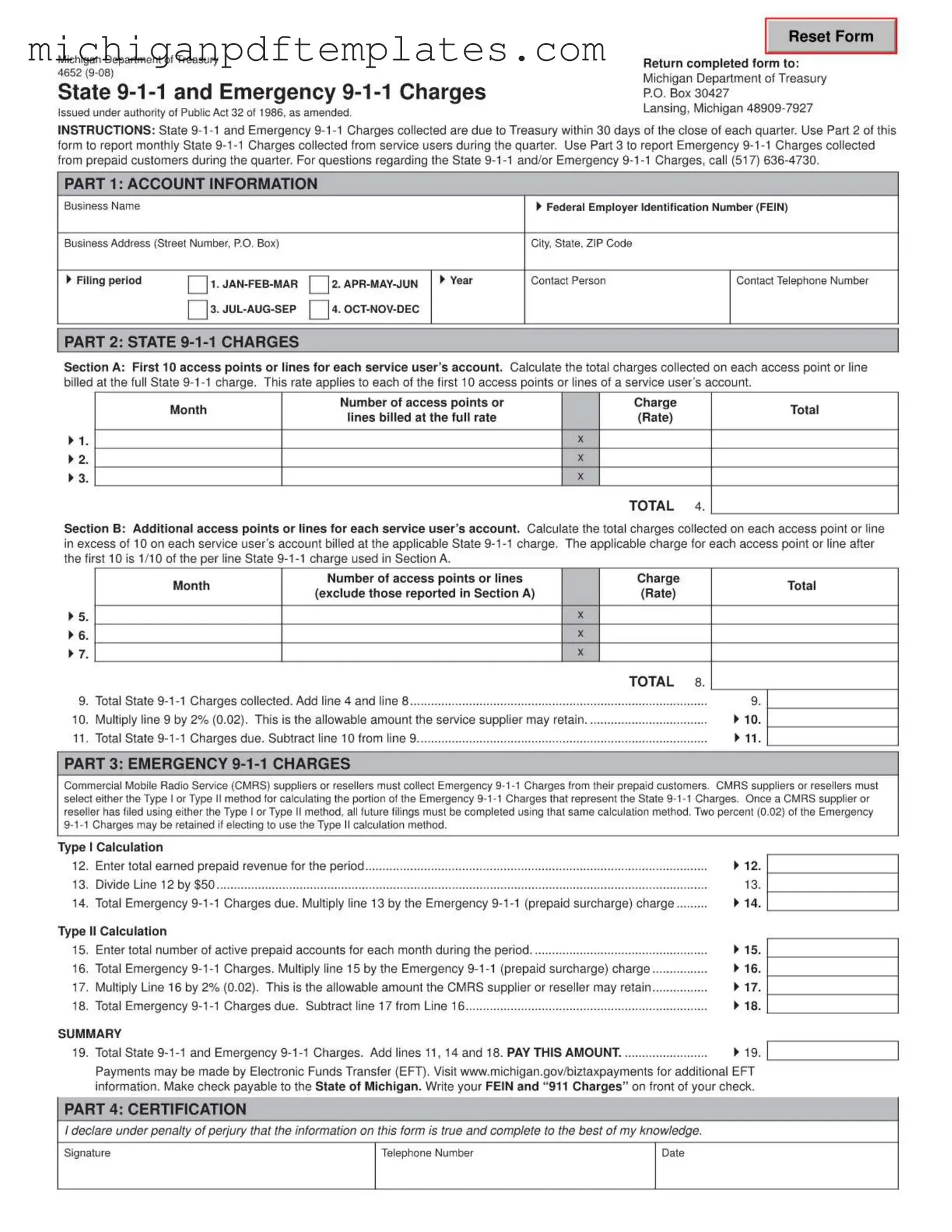Fill in Your Michigan 4652 Form
The Michigan 4652 form is a document used to report State and Emergency 9-1-1 charges collected by service providers. This form is essential for ensuring compliance with Public Act 32 of 1986, which mandates the timely reporting of these charges to the Michigan Department of Treasury. To fulfill your obligations, complete the form and submit it by the deadline specified.
Ready to get started? Fill out the form by clicking the button below.
Get Your Form Now
